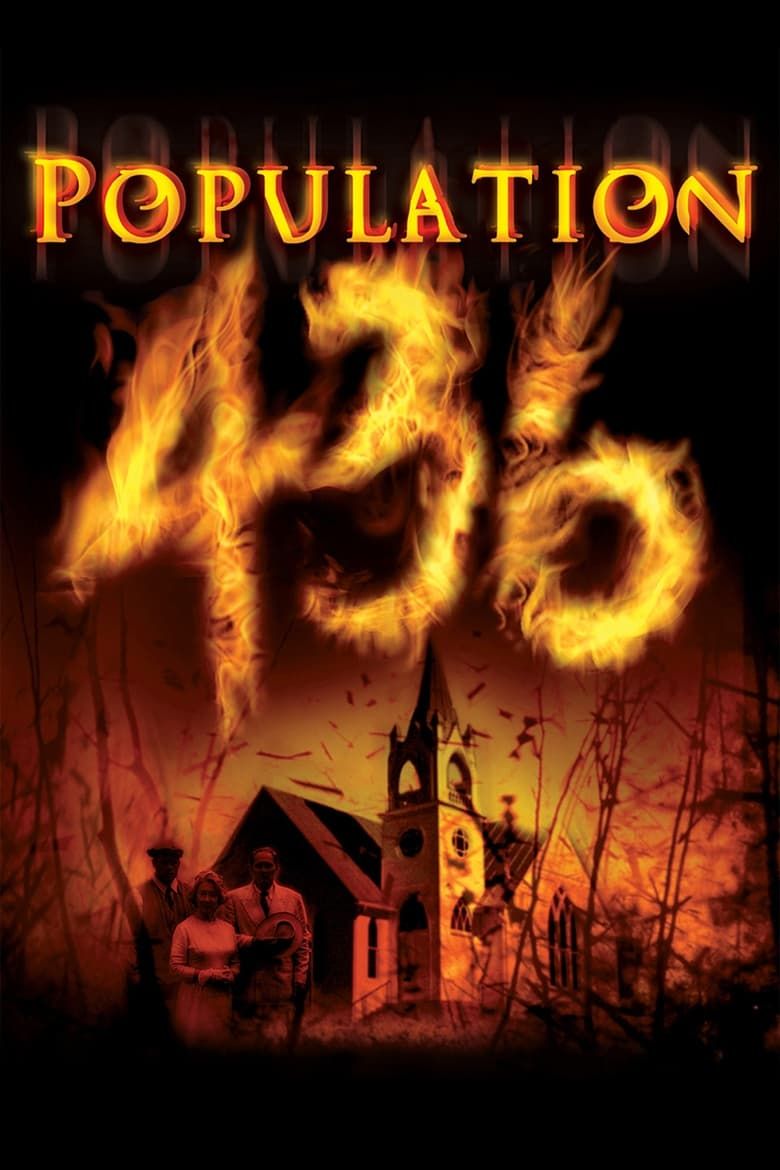Stephen King has a unique storytelling style that evokes a deep sense of nostalgia, making it easy to identify works influenced by his writing. His remarkable talent lies in weaving thematically complex narratives that are anchored by a tight-knit community. Most of his narratives unfold in a singular, often quaint small town, showcasing a limited yet diverse cast of characters. This narrative model frequently explores the devastating impacts of a singular, malevolent force. While not every piece fits neatly into this framework, it undeniably reflects King’s distinctive style, resonating with readers who appreciate his immersive storytelling.
Population 436 embodies the quintessential elements of a Stephen King narrative, portraying an outsider ensnared in a secluded community that adheres to stringent religious convictions and ritualistic practices. The film’s tone is deliberately slow and contemplative, prioritizing an atmosphere of underlying dread and discomfort over mere shock tactics. Throughout the film, uncertainty reigns, as the audience grapples with distinguishing between personal belief and the enforced norms of the town’s social dynamics.
Discover How ‘Population 436’ Embodies the Strange Small Town Trope
Population 436 is firmly set in the fictional town of Rockwell Falls, a remote location that has maintained a stable population for many years. Steve Kady (Jeremy Sisto), an employee of the Census Bureau, is dispatched to this town to investigate the mystery behind its unchanging population count. As he interviews the locals, his concerns grow regarding their odd and seemingly rehearsed replies. From encountering a doctor lacking any qualifications to witnessing students reciting unfamiliar scriptures in a classroom, the situation becomes increasingly worrisome. On the surface, Rockwell Falls appears normal, yet these subtle abnormalities contribute to an escalating sense of dread.
Sisto masterfully portrays Kady as a polite skeptic, making him an ideal neutral outsider. He forges a connection with Deputy Bobby Caine (Fred Durst) and strives to immerse himself in the town’s culture during his stay. Interestingly, Kady’s official role grants him not only access to various locations but also a sense of authority and purpose. This grounding makes his presence believable, and his subsequent inquiries stem from a genuine concern rather than mere curiosity. As his profession revolves around counting populations, the stagnant numbers raise occupational alarms, allowing the audience to trust his perspective and heightening the emotional impact of his gradual unraveling.
Explore the Classic Themes of Stephen King Present in ‘Population 436’
In many of his works, Stephen King employs supernatural horrors to confront real-world issues, compelling readers and viewers to reflect on their own beliefs and reactions in various situations. Stories like The Mist and Needful Things feature expansive casts, prompting audiences to analyze the different characters’ motivations and where they stand on critical decisions before ultimately unveiling the truth. Similarly, Population 436 follows this foundational framework, withholding clear answers until the film’s climactic moments. It challenges viewers to consider why so many individuals cling to a singular truth, even when faced with extreme rituals, such as the shocking therapy inflicted on dissenters and a sacrificial lottery implemented when the population exceeds 436.
The film’s deliberate pacing allows Kady ample time to explore every aspect of the town, emphasizing his interactions with the residents over action-packed sequences or dramatic confrontations. This intentional ordinariness of Population 436 makes any slight deviation from normalcy feel particularly unsettling for the audience. A pervasive sense of foreboding looms, suggesting that something is amiss, yet the film refrains from overtly revealing the nature of the threat, leaving the audience unsure of the boundaries of reality. This narrative style forces viewers to sit uncomfortably within the unfolding story, mirroring the entrapment experienced by the citizens of Rockwell Falls.

Related
Mike Flanagan’s ‘Midnight Mass’ Connects to a Stephen King Horror Miniseries
Pray you don’t live in one of these towns.
The community depicted in Population 436 is rooted in realism, yet the dialogue carries an unsettling artificiality, suggesting a form of brainwashing or scripted responses. Despite this, the residents appear blissfully unaware of their reality, seemingly content with their lives. This stark contrast amplifies Kady’s growing agitation. The film successfully cultivates an atmosphere of unease where the truth remains elusive; it mirrors the essence of Stephen King’s storytelling, ensuring that fans of the acclaimed author will find much to appreciate.

Population 436
- Release Date
- July 4, 2006
- Runtime
- 88 minutes
- Director
- Michelle MacLaren
- Writers
- Michael Kingston
- Producers
- Jessika Borsiczky
-

-

-

-

Peter Outerbridge
Deputy Hecker






